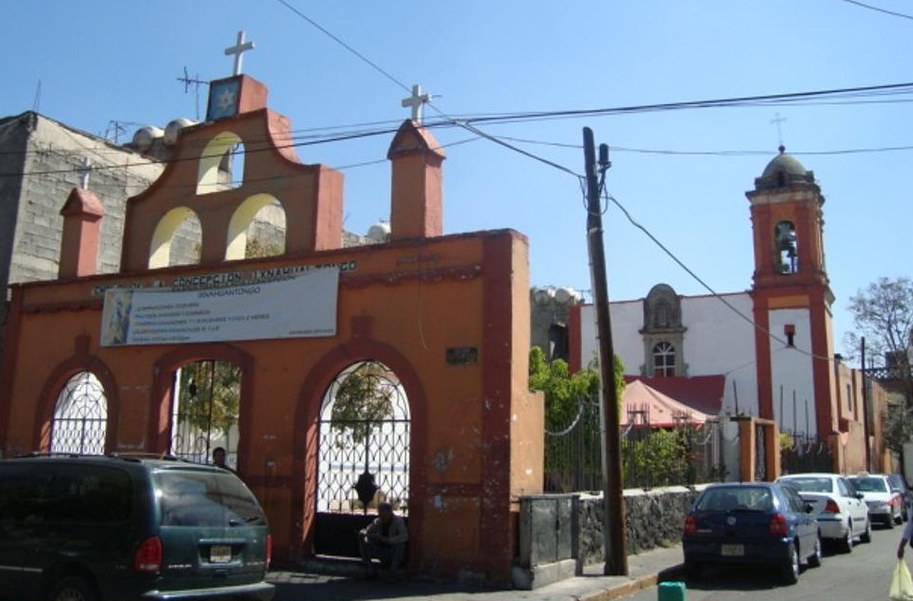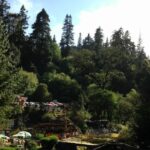
_
_
The Church of the Inmaculada Concepción Ixnahualtongo stands just a few meters south of the Mercado de Sonora. This exciting little neighborhood carries on much of the tradition of the market itself. In its few blocks, you’ll find all kinds of vendors in Santería, witchcraft, animism, and varieties of local folklore and Santa Muerte. Sculpture and handicrafts are abundant, too.
The neighborhood begins with a people called the Huitznahua, likely a family-based tribe. Their neighborhood was known as Huitznahuatonco, Nahuatl meaning “Place of the gods of the south.” As is common, there are variations on the spelling of the name, among them Huiznahuatonco and Yznahuatonco, which might also be translated as “Place of many thorns.” The people here were highly honored. They bore responsibility for creating the image of Huitzilopochtli, the principal sun god for all the Mexica people.
After the arrival of the Spanish, the neighborhood passed under the control of numerous other parishes and when it fell under the patronage of the Immaculate Conception as patron saint is not known. The neighborhood was long known as La Conchita for this patronage. It was certainly a part of San Pablo Teopan/Zoquipan by 1574. A well-documented 1772 parish reform placed this chapel under the control of Santo Tomás la Palma.
Two 1845 earthquakes badly damaged the bell tower, but an 1850 inventory noted the iron rails for the two pulpits and a semicircular communion rail. Soon after, during the Reforma period, the church was actually kept open by the Federal District governor.
In 1902, the neighborhood briefly hosted the Indios Verdes statues, as a more permanent home was sought for the giant bronze figures.
The industrialization of the south of the city brought the “La Gran Unión”, and the “La Viga” acid factory. Tanneries, glue factories, brick factories, and animal stables drew railroads moving between La Viga and San Antonio Abad. This eventually led to the large residential buildings used to house the many workers.
In 1940, a land subdivision company created the Colonia Merced-Balbuena. This absorbed the old La Conchita neighborhood entirely. Only a few historical features remain of the old urban layout, but the neighborhood could profitably be understood as an example of the industrial urban housing that the great 20th century housing developments reacted against. The builders of the Unidad Kennedy in the Jardín Balbuena sought to improve upon this very housing.
Sources cited on this page:
Instituto Nacional de Antropología e Historia, México –
Coordinación Nacional de Monumentos Históricos.
“Ficha del Catálogo Nacional de Monumentos Históricos Inmuebles número
I-09-02600 . -. Disponible en:
http://catalogonacionalmhi.inah.gob.mx/consulta_publica/detalle/14132”
 https://www.facebook.com/Rector%C3%ADa-Inmaculada-Concepci%C3%B3n-Ixnahualtongo-101138748159842/
https://www.facebook.com/Rector%C3%ADa-Inmaculada-Concepci%C3%B3n-Ixnahualtongo-101138748159842/

One of Mexico City's most spectacular skylines, it's a National Park and a tremendous spectacle.

Giant housing for the giant see, it's still one of the most successful public housing complexes ever.

A neighborhood market on the cusp of several neighborhoods.

One of Pani's massive housing developments from the 1960s revolves around a terrific colorful market.